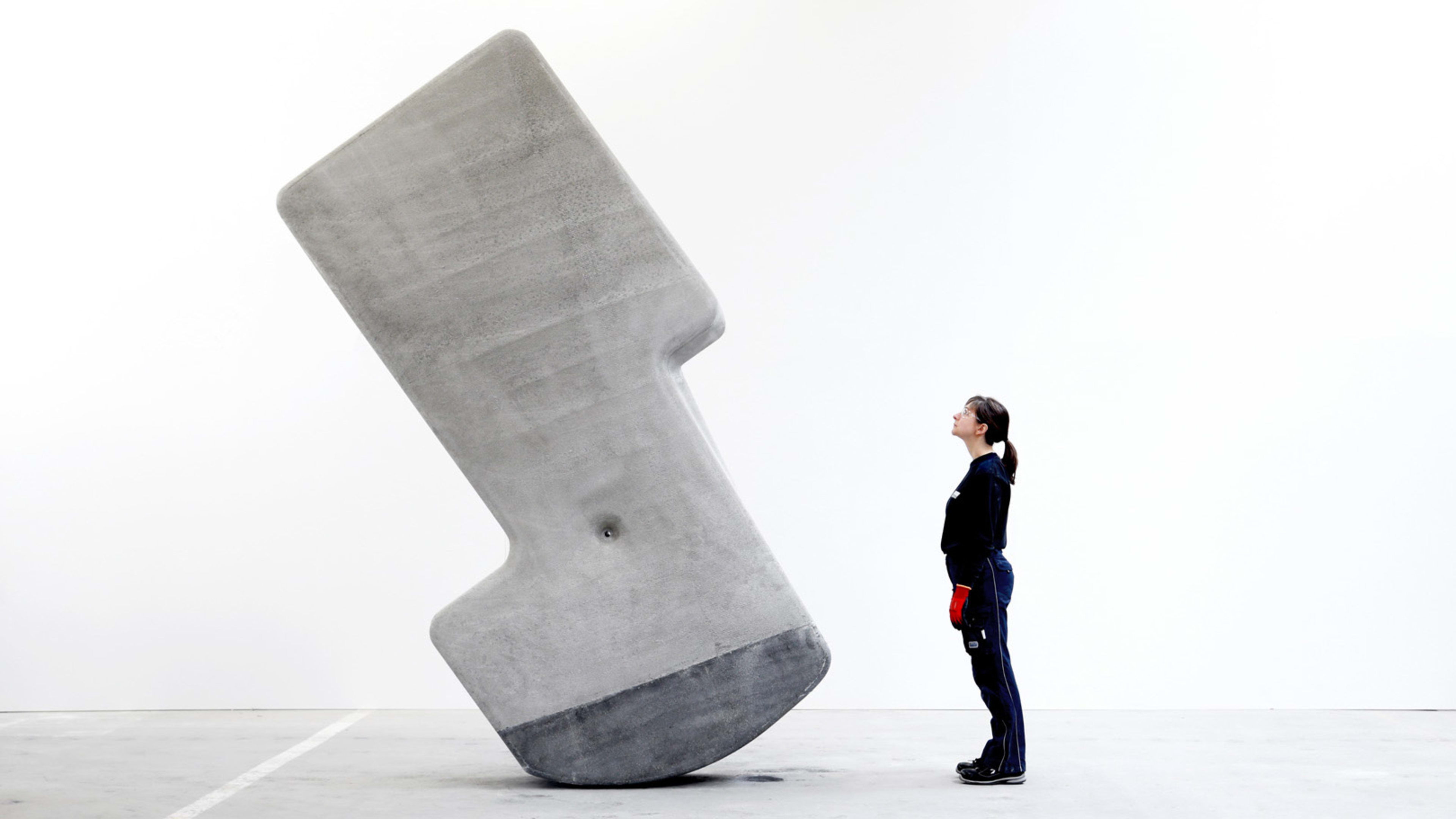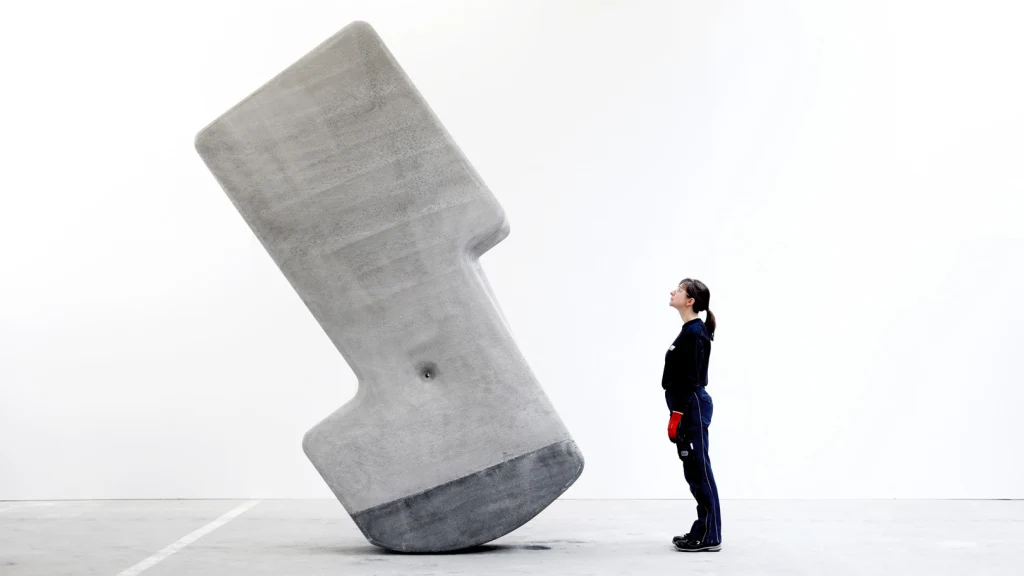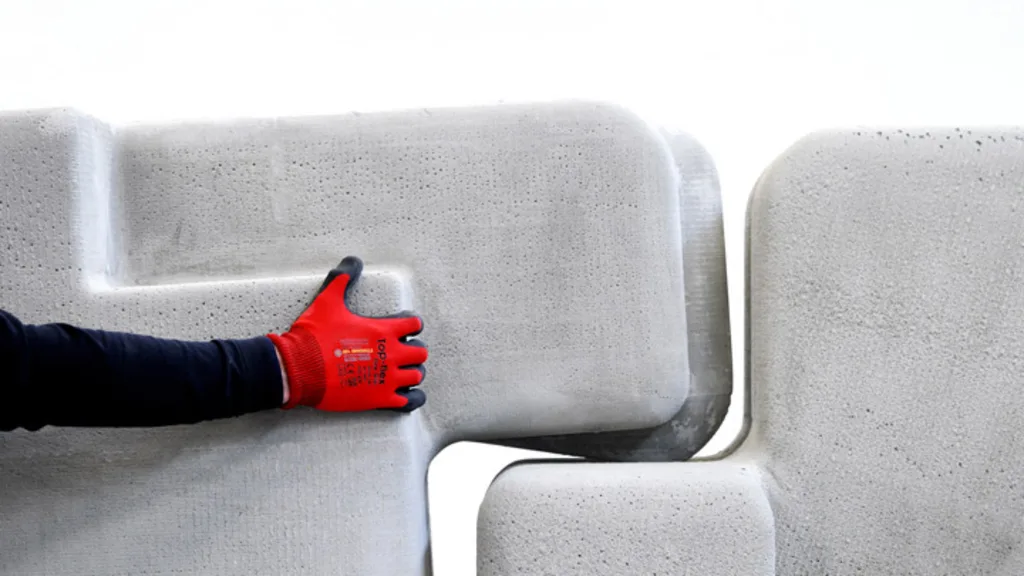Today, construction workers rely on cranes to lift the big slabs of concrete and other materials that go into many commercial building projects. But it hasn’t always been that way; for thousands of years, humans moved monumental stones by hand. A collaboration between Boston-based Matter Design and the building materials company Cemex Global R&D attempts to return to those ancient methods–while introducing an entirely new way to move heavy concrete slabs with nothing more than human hands.
Matter Design has spent years researching and building monumental architecture with ancient methods. For instance, the studio create a 2,000-pound stone sculpture that could be moved by hand after studying how Stonehenge and Easter Island’s archeological sites may have been built. It has also experimented with ancient Greek masonry techniques. Working with Cemex Global, they began their latest project with a series of experiments exploring the relationship between building materials and humans. What would an architectural element that could be moved by a single person look like?
The resulting project, called Walking Assembly, demonstrates the possibilities with a set of interlocking concrete puzzle pieces that the designers are able to assemble into a solid wall and staircase in about 15 minutes.
[Image: courtesy Matter Design]
To create it, the designers engineered a series of 5-foot-tall concrete blocks, each weighing between 926 and 1,543 pounds and made from two different densities of concrete. Using some clever physics, they manipulated the center of mass of these blocks so that the blocks naturally move along their curved bottoms.
“It’s like rolling a wheel,” says Brandon Clifford, director and cofounder of Matter Design and assistant professor at MIT.
To lock each block in place, an elongated tool is placed inside a hole at its center. By adding more weight to the bottom of each piece so that it balances exactly on its lower center of mass, it acts almost like a parking brake. This whole process takes very little human energy because it harnesses gravity and the stones’ different densities to move them.
Walking Assembly has real practical implications beyond the prototype. Clifford points out how most heavy structures today are demolished when their useful life ends. Concrete, for instance, accounts for as much as 8% of the world’s CO2 emissions every year. But a system like this could provide a new way to build heavy structures that could be easily taken apart and reconstructed using nothing but human hands–no crane, or landfill, needed, making this a cheaper and more sustainable way to build.
There may be applications in temporary construction, too. Most structures that don’t require cranes are made of light materials–like the inflatable plastics or fabric-like materials that are used for temporary housing in the aftermath of a disaster. But there are problems with lighter structures: They don’t stand up against the elements as well, and they don’t provide a sense of stability or acoustic privacy. If you could use heavier materials like concrete to build temporary shelters, you’d get the benefits of weight–like insulation, warmth, and privacy–without needing a crane to put it all together. “We’re trying to make heavier things not dedicated to permanence,” Clifford says. He envisions this assembly method upending the construction industry, which often relies on concrete blocks and slabs. In particular, he wants to take on tilt-up wall construction, a process in which concrete slabs are cast horizontally and then lifted into place using a crane to form walls.
Walking Assembly changes the way we think about building in a more fundamental way: A monolith that weighs more than 1,000 pounds is suddenly an object that a person can handle on their own. It brings us back to the very beginning of construction, when people toiled with nothing more than their hands.
Recognize your brand’s excellence by applying to this year’s Brands That Matter Awards before the early-rate deadline, May 3.
















